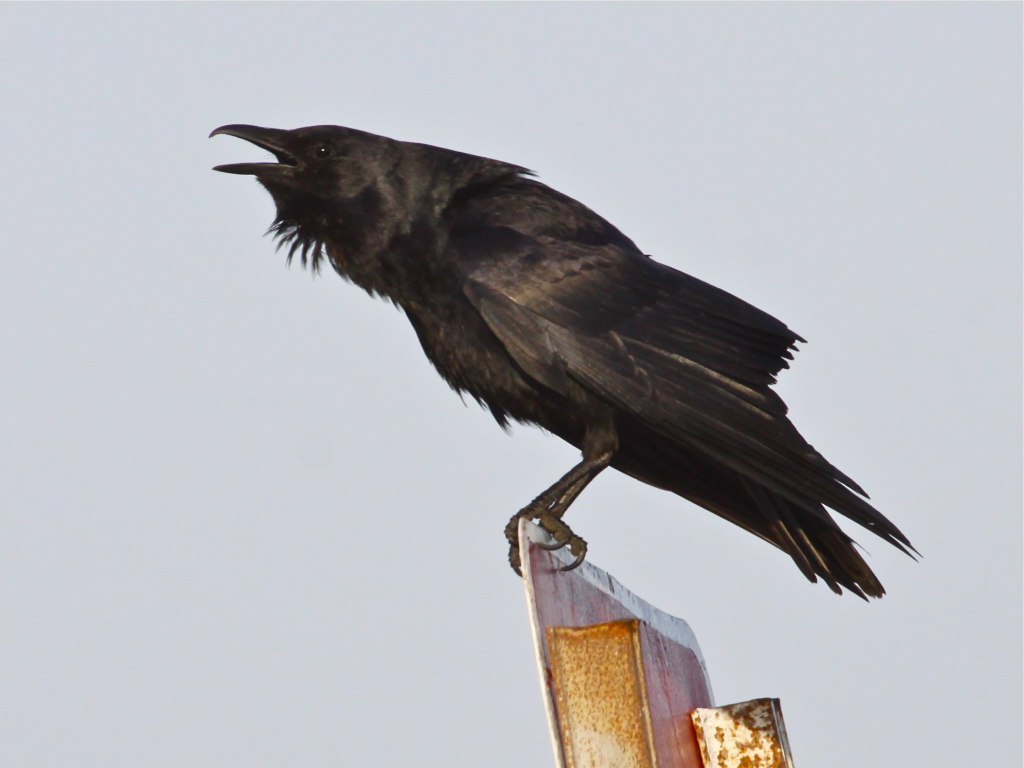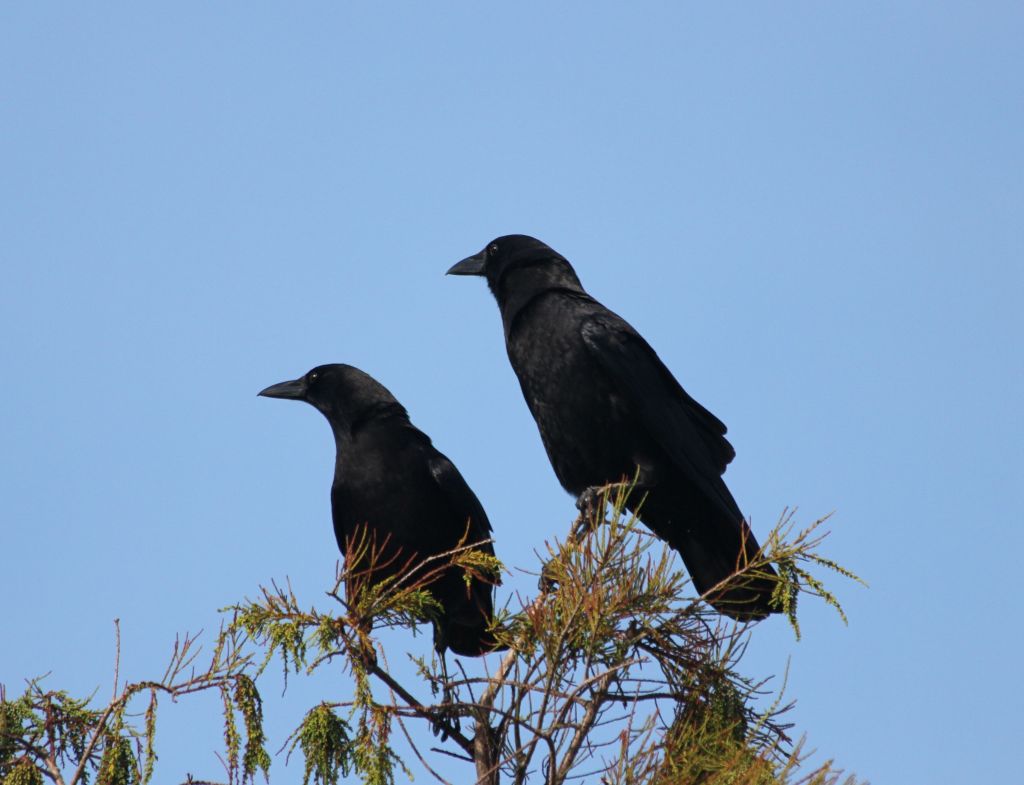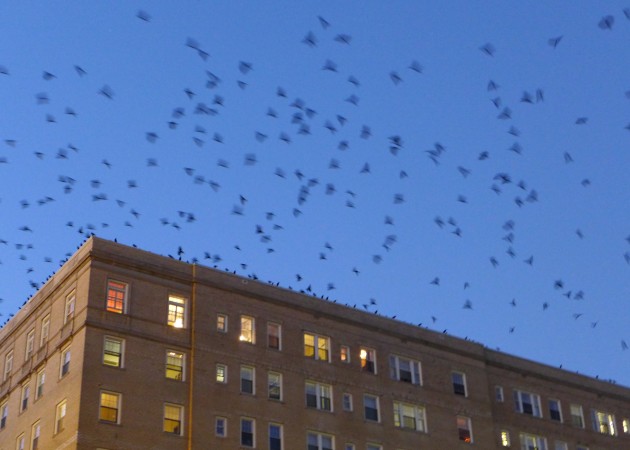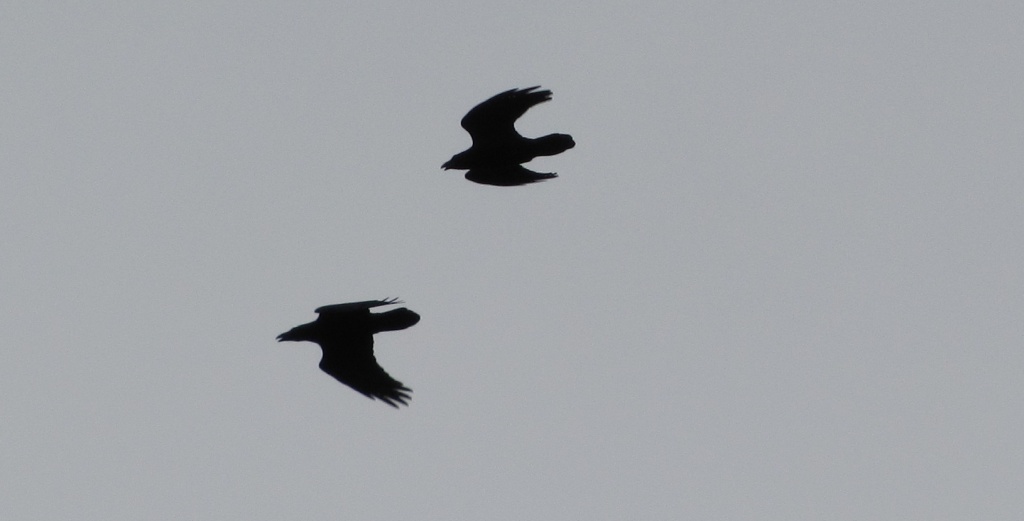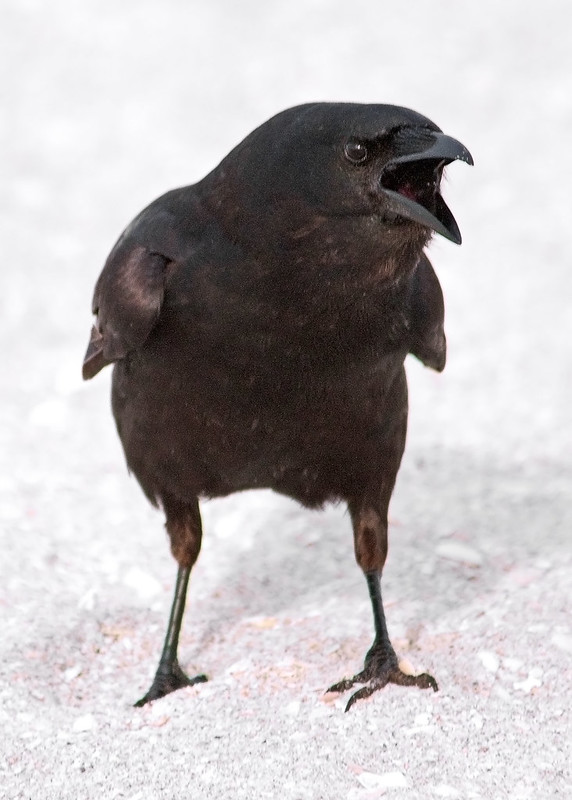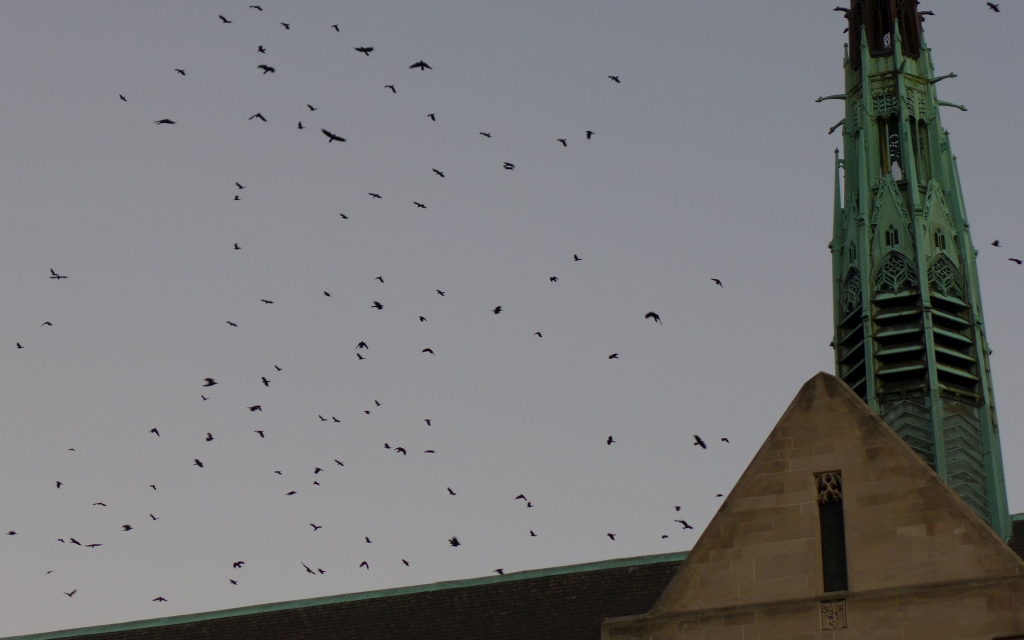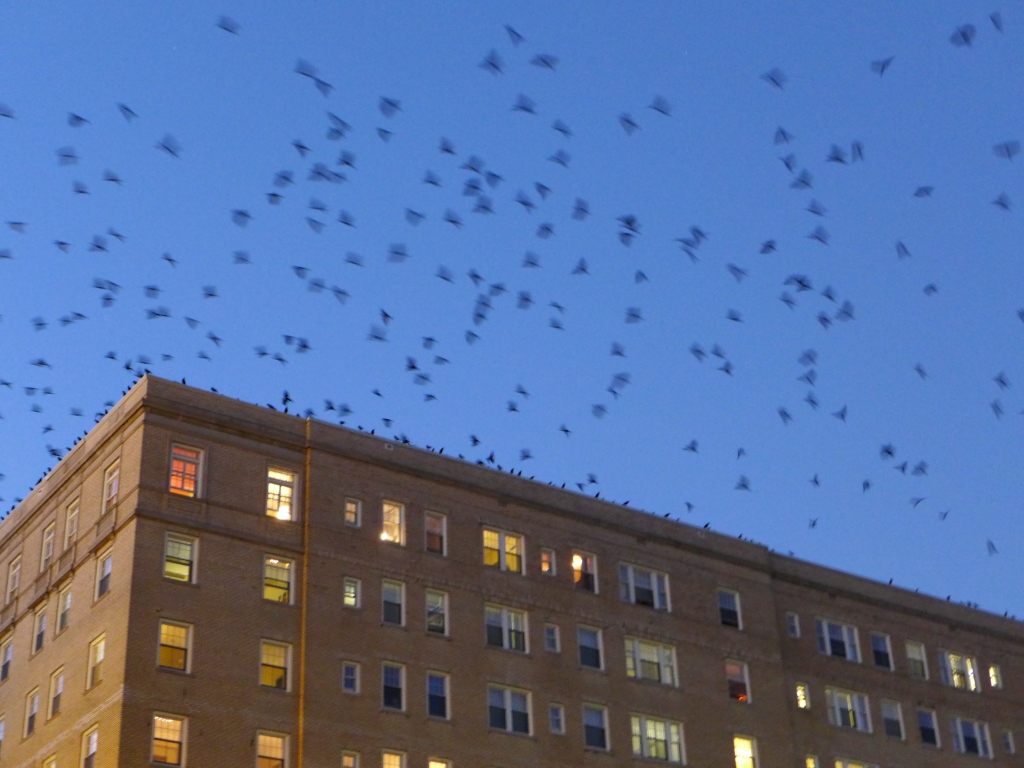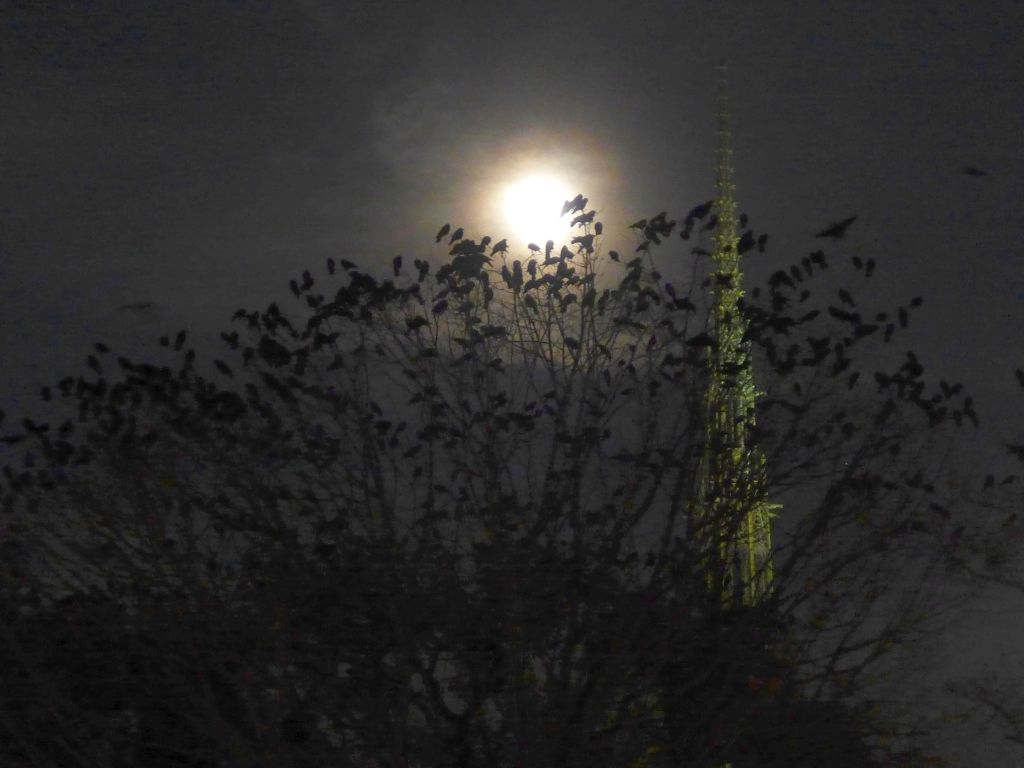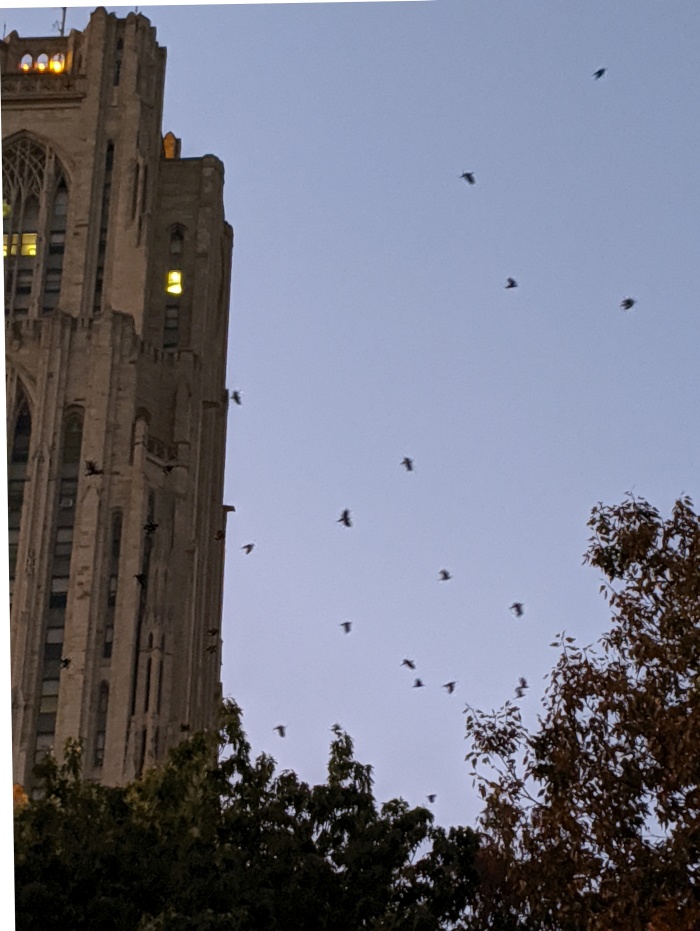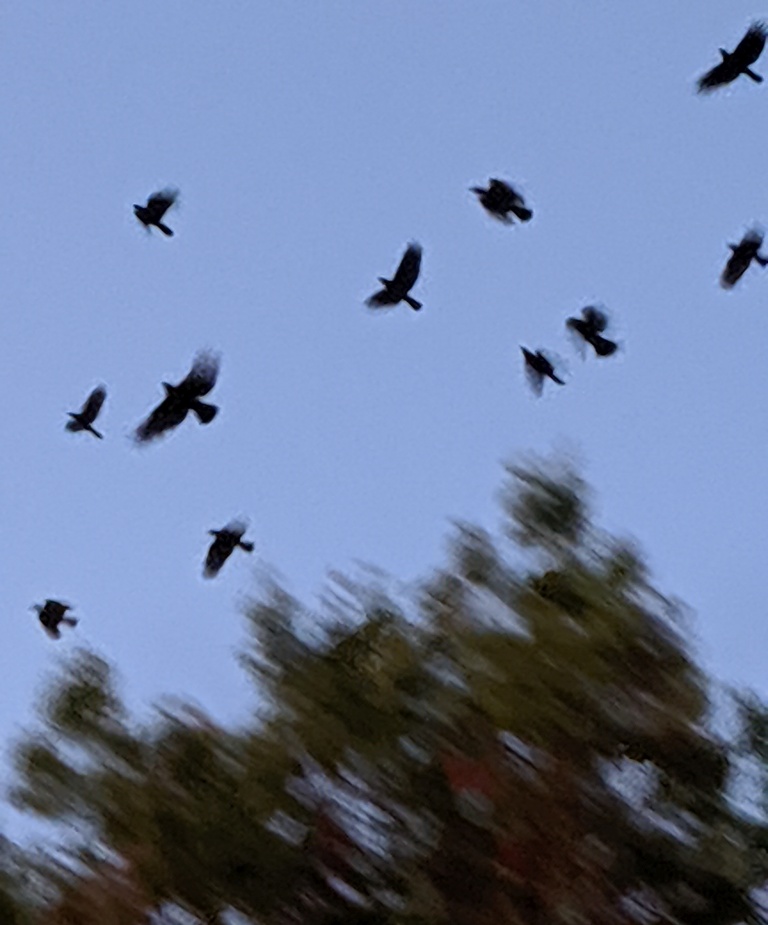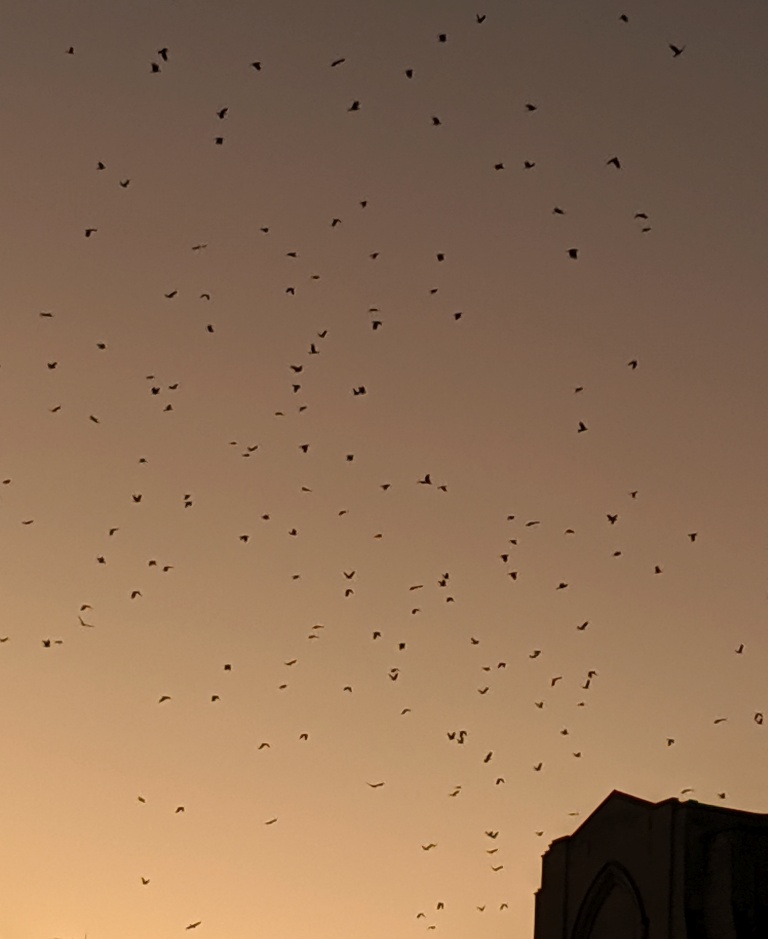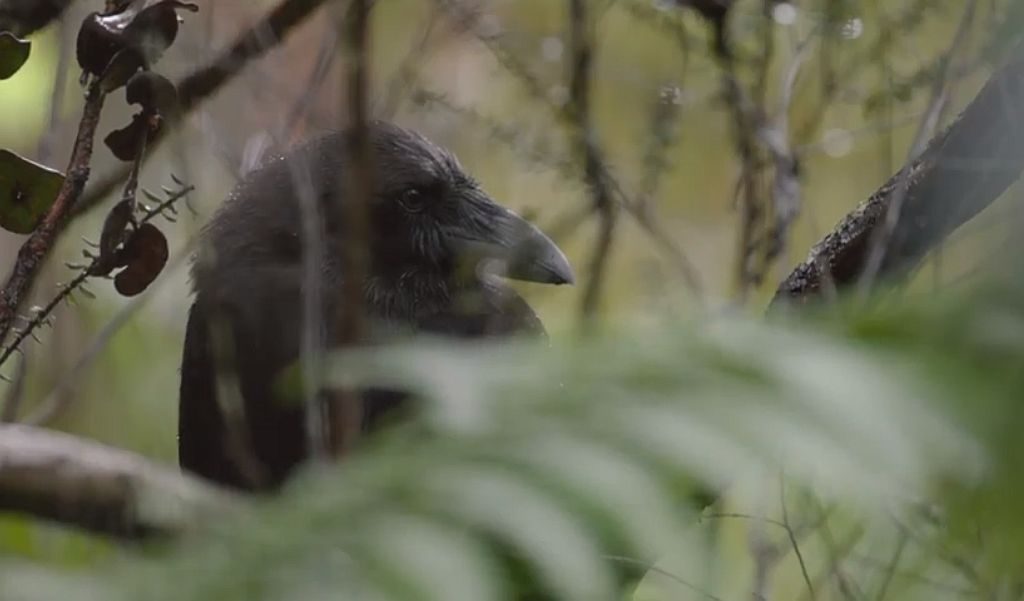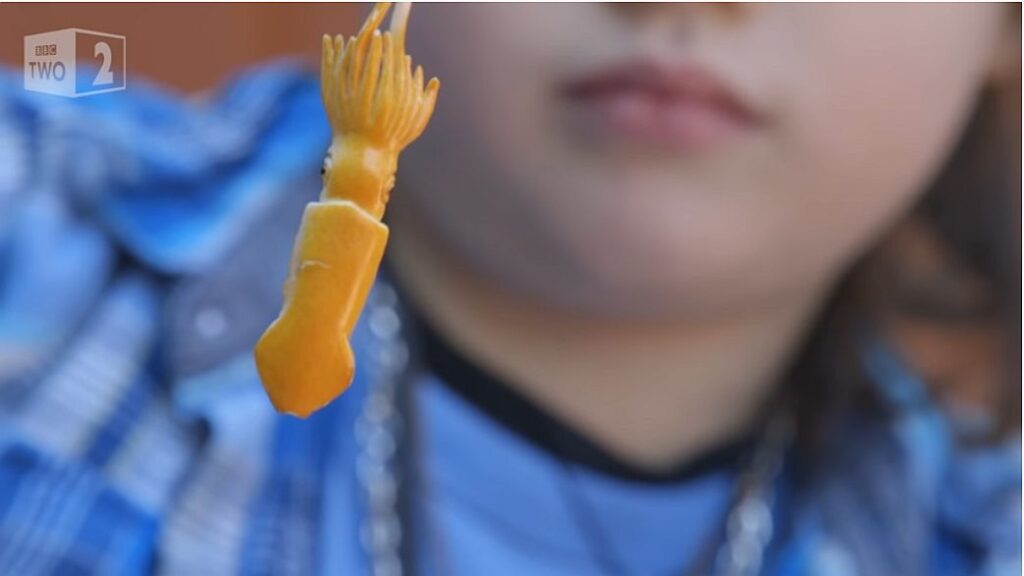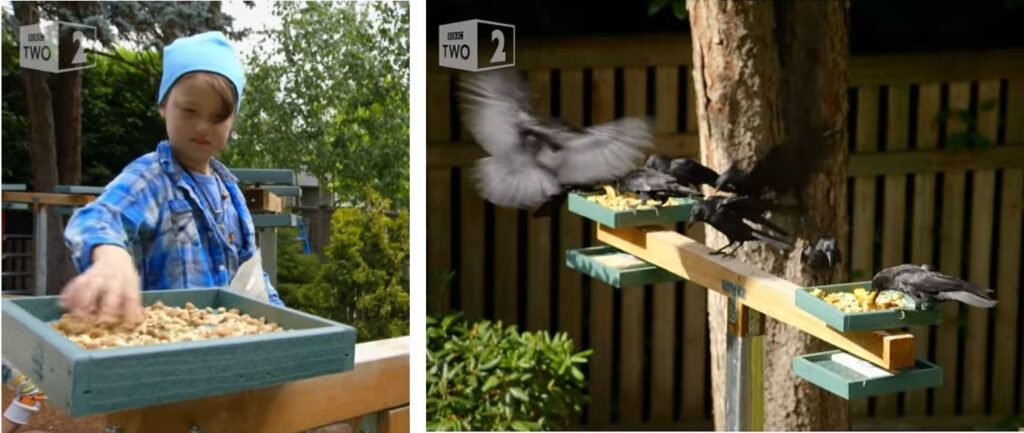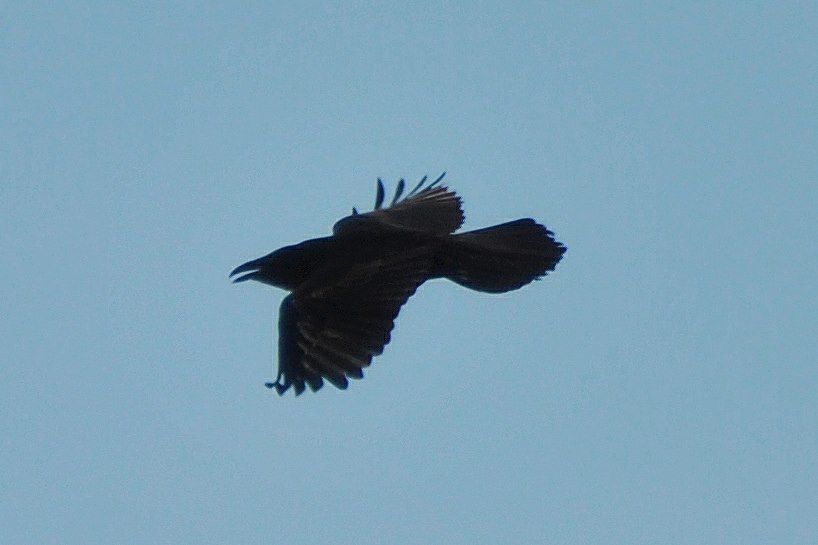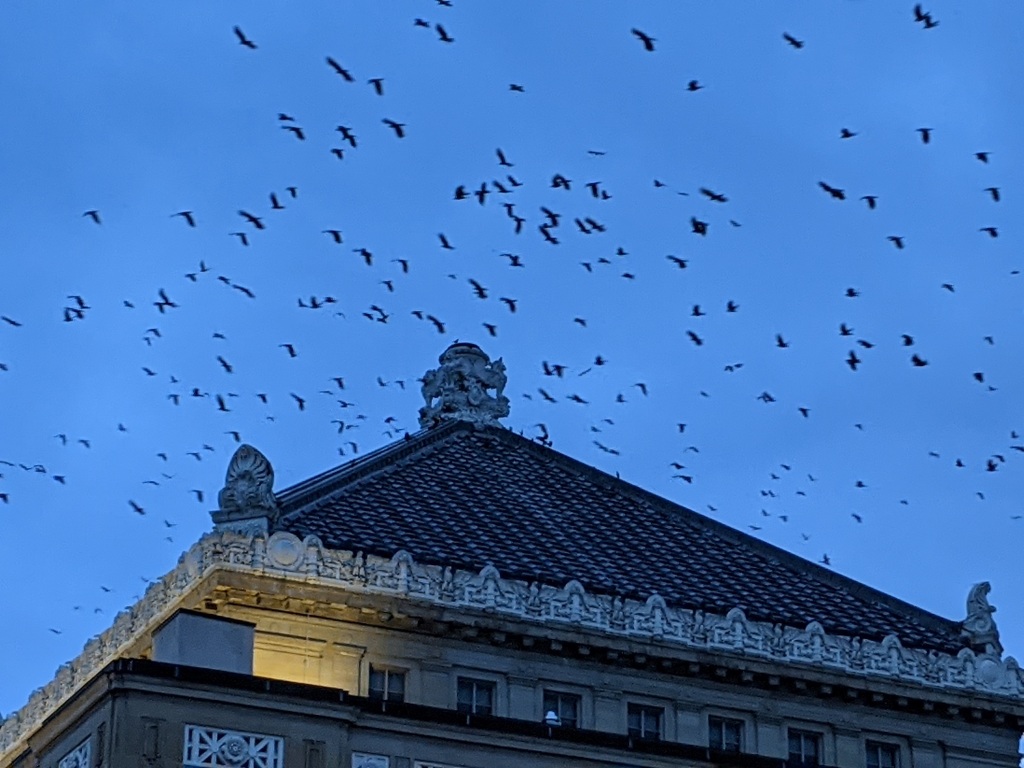
28 October 2020
Since moving to Oakland three months ago I’ve had a front row seat on the crow population. From a family group of six crows in late July the numbers grew to 200 in mid-August, 1000 in late September, 5000 in mid-October and now in late October 10,000 crows come to Oakland every night. The question that worries everyone who has trees is this: Where will the crows sleep?
Crows roost in mature trees or on flat roofs where there’s ambient light, white noise and no disturbance. They want the lights on so they can see danger coming, especially owls. They like white noise — the sound of traffic, rushing water, or humming fans — but they don’t like sudden loud noises.
About 10 years ago the crows chose Pitt’s campus (photo below, December 2017).
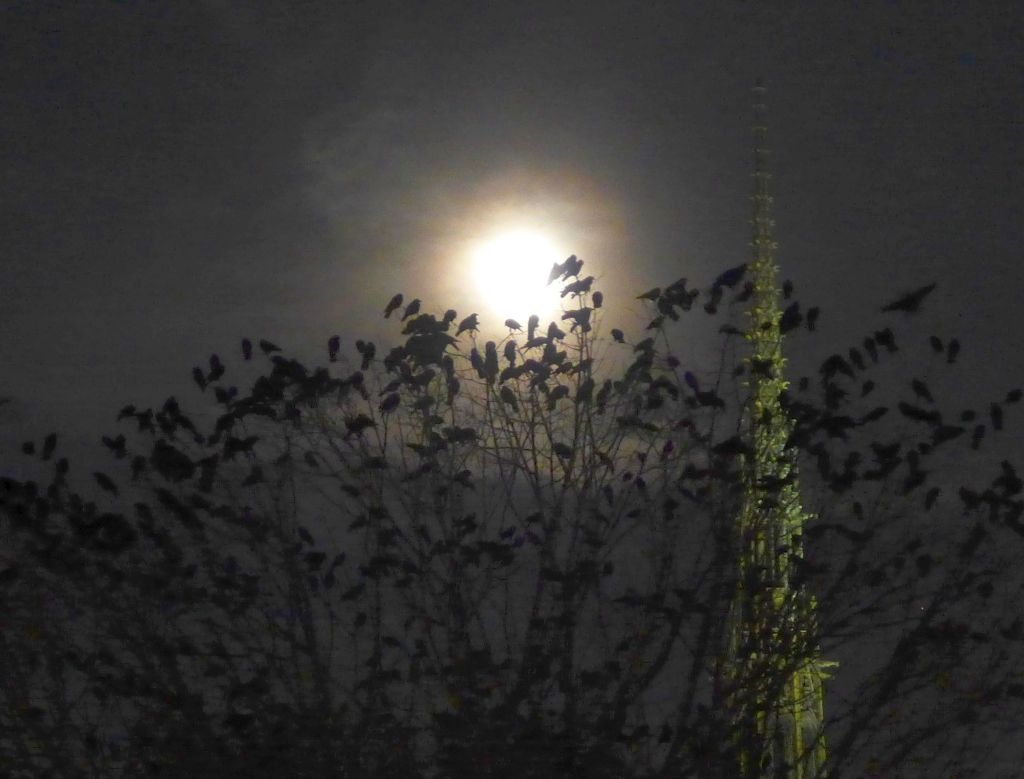
Two winters ago they moved one block north to Schenley Farms, a small neighborhood of mature trees and historic homes where their noise and slippery feces are overwhelming. This year Schenley Farms is going to encourage the crows to sleep elsewhere by making sudden loud noises before the crows settle for the night.
The first step, however, is to find out what the crows are doing. I volunteered for that job and I love it.
I’ve learned that crows move into Oakland almost exactly at sunset, land in final staging areas 1-3 blocks from the roost, and swirl around for 30-45 minutes until they settle.
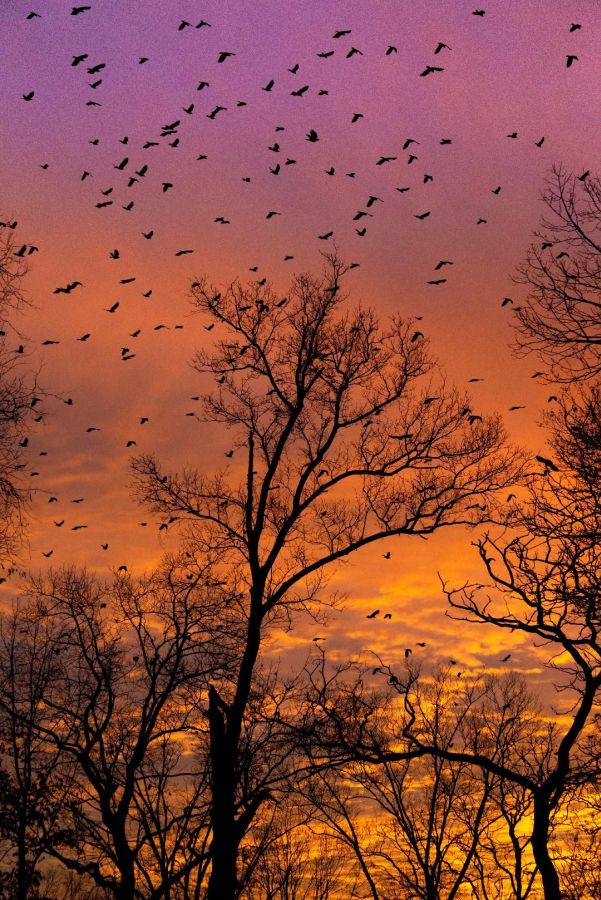
Last Saturday the crows didn’t choose Schenley Farms but I couldn’t see their final roost west of Soldiers and Sailors because of intervening buildings. On Monday evening at 8pm Michelle Kienholz photographed them roosting on trees and buildings near the Graduate School of Public Health (GSPH).
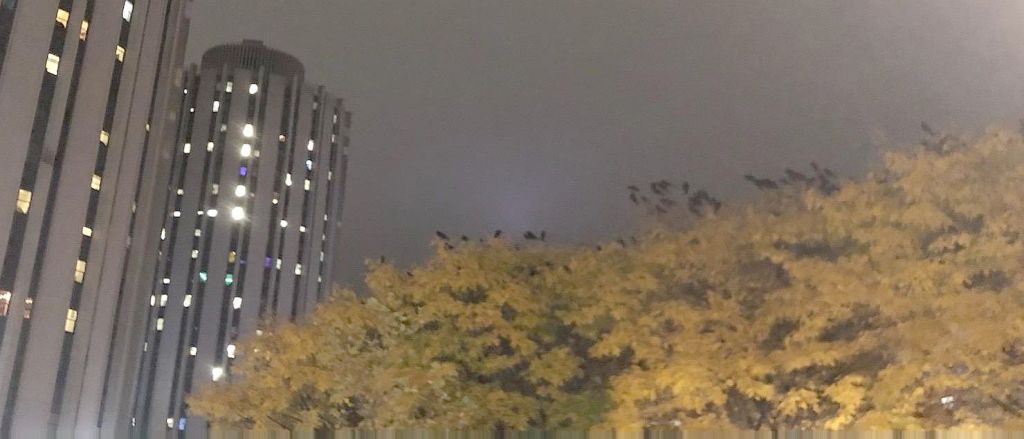
They’re hard to see in her photo below …
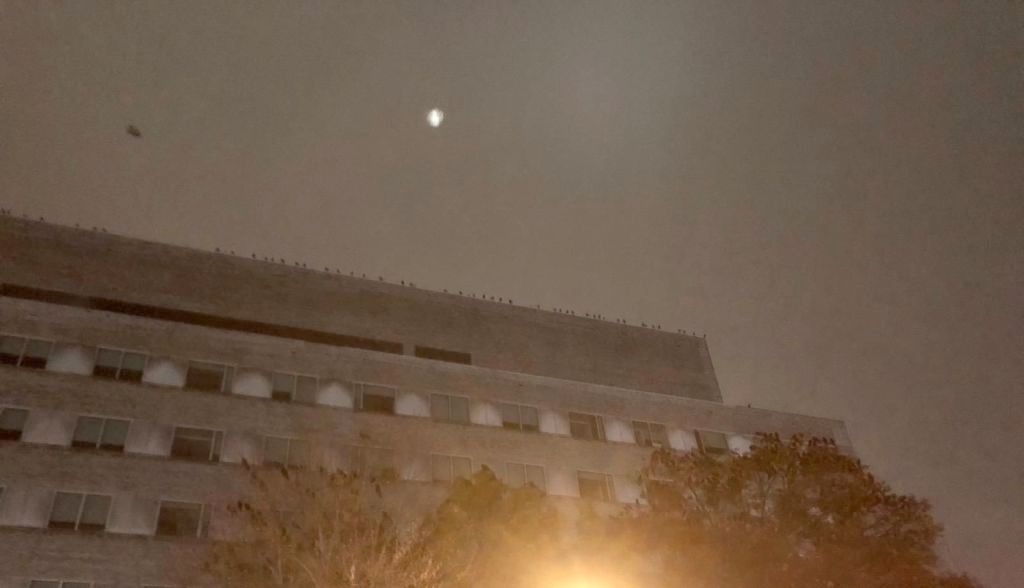
… so I removed the brown and circled them in red. They line the roof edge and the treetops. One is flying in the dark!
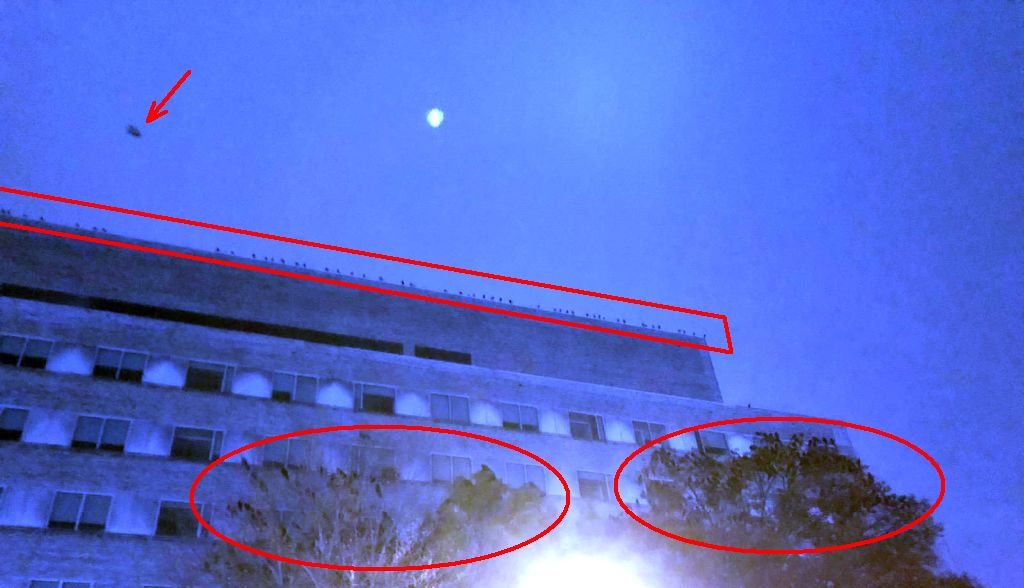
So far so good. The crows aren’t sleeping near the Cathedral of Learning. They’re not at Schenley Farms.
There’s still a possibility they could choose Schenley Farms but if they do the residents will use “clappers” like those Pitt has found effective for dispersing crows — simply two boards connected by a hinge that can make a loud clapping sound.

If clappers don’t work Schenley Farms will warn the crows before they roost by making really loud noises — pyrotechnic “screamers and bangers.” So far it hasn’t come to that.
Where will the crows sleep this winter? Perhaps far away.
Let me know if you find them.
(photos by Kate St. John, Joanne Tyzenhouse and Michelle Kienholz. Clappers photo via Alex Toner at Univ of Pittsburgh)
